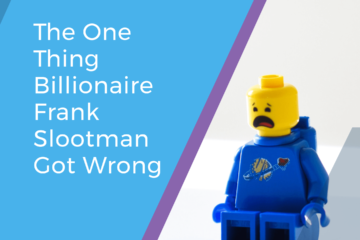11 Considerations for an Enterprise Customer Success Management Pilot

As B2B companies innovate in their business models, offering flexible and customer-aligned delivery models like subscription, cloud, pay-as-you-go, and outcomes-based pricing, they are realizing the increasing power that their clients have—and the increasing ROI from investing in retaining and growing their customer base.
At the same time, these B2B companies have implemented a myriad of systems over the last decade—from CRM to Marketing Automation to Online Support to Billing—allowing them to have greater insights into their client bases than ever before.
With this convergence of business need and data availability, B2B innovators are going beyond the normal organizations of Sales and Service/Support to create a new Customer Success Management (CSM) team focused on proactively driving client outcomes using data.
However, for most mature companies, this Customer Success concept requires a great deal of consideration. Where should the team live in the company? What are its responsibilities? How does it relate to other functions (e.g., Sales/Marketing/Support)? How should it be measured? Where does the budget come from?
At Gainsight, we’ve worked with hundreds of large companies on the journey to Customer Success and have seen what works and what doesn’t in terms of launching “pilot” experiments in Customer Success.
1. Define the Core Business Driver for Customer Success
Because Customer Success is such a “hot” concept, it has also become an overloaded term. Customer Success can be applied to adoption, renewals, expansion, advocacy—anything that involves getting more from your client base by driving greater results. However, in a pilot, you need to think deeply about the specific goals for your business. For some businesses, a lack of Customer Success causes churn. For other, more sticky businesses, the impact is slower expansion. The below table articulates example pilot goals for different types of businesses.
| Unique Aspect of Business | Current Situation | Customer Success Pilot | Customer Success Outcome |
| Complex onboarding | Friction during onboarding causing downstream churn | CSM team focused on onboarding phase | Less “onboarding churn” leading to higher renewals |
| Seat-based pricing model | Overselling and low adoption leading to churn and down-sell | CSM team focused on adoption phase (deployment and adoption of unused seats) | Increased percentage adoption leading to less churn and downsell |
| Sticky platform-style product with “land and expand” modules | Slow adoption hurting expansion efforts | CSM team focused on adoption phase | Faster time-to-value leads to faster next sales opportunity at customer |
| Long-term contract product or service | Poor customer satisfaction hurting advocacy and new sales | CSM team focused on satisfaction and business value | Improved client business value alignment leads to higher client satisfaction (e.g., Net Promoter Score or referenceability), yielding greater advocacy and new sales |
| Competitive product category with less client commitment | Company surprised by churns to competitors | CSM team focused on early warning to risk | Earlier action on risk leads to reduced competitive churn |
| Large enterprise-targeted product | Customer satisfaction low due to client-product team collaboration, resulting in slower new sales | CSM team focused on product adoption and collaboration | Greater client engagement and adoption leads to higher satisfaction, yielding increased advocacy and new sales |
2. Define the Starting Point Organization
Like most new initiatives in large organizations, innovation comes from a combination of situation (what group you sit in) and motivation (your desire to change). However, we’ve found some patterns in logical starting points for CSM teams. In general, the “ideal” CSM is almost like a unicorn: hard to find in real life because the job involves a blend of:
- Product knowledge
- Domain knowledge
- Strategic thinking
- Relationship skills
- Project orientation
- Task orientation
| Starting Point | Product knowledge | Domain knowledge | Strategic thinking | Relationship skills | Project orientation | Task orientation |
| Training | Medium | Low | Low | Medium | Medium | Medium |
| AM | Low | Medium | Medium | High | Low | Low |
| TAM | High | Medium | Low | Medium | Medium | Medium |
| PS | High | High | Medium | Medium | High | Medium |
| Consulting | Low | High | High | High | High | Low |
| Support | Medium | Low | Low | Low | Low | High |
| Product | High | High | Medium | Medium | Low | Low |
We most frequently see organizations with technical offerings starting with the TAM or PS groups, while organizations with transactional offerings starting with the AM group.
3. Define the Product to Start With
For many large organizations, the vision for Customer Success spans across the entire product line. But where do you start? Successful pilots involve one or a few product lines and create proof points to continue scaling.
Again, there is no perfect answer, but consider the following:
| Starting Point | Pros | Cons |
| Mature product |
|
|
| Mature product in transition (e.g., perpetual moving to subscription pricing) |
|
|
| New product |
|
|
| Recently-acquired product |
|
|
In general, we find CSM pilots starting with newer or acquired product lines or with product lines in transition.
4. Define Segment to Start With
Even within a product line, you likely have multiple tiers of customers.

At Gainsight, we define three canonical models for Customer Success for these tiers:
- High Touch Customer Success Management: Strong coordination around a client’s Success Plan and client journey across CSM, Sales, Services, Support, and Product
- Mid Touch Customer Success Management: Trigger-driven, “just in time” Customer Success based upon data (e.g., client is six months from renewal and only using one out of three modules)
- Tech Touch Customer Success Management: Fully-automated, personalized Customer Success using email and other tools

| Segment | Pros | Cons |
| High Touch | Impacts largest clients |
|
| Mid Touch | Significant dollars but usually gets limited attention | Requires process-oriented approach |
| Tech Touch | Least amount of change management | Sometimes have to coordinate with Marketing (especially for automated 1:many outreaches) |
We most frequently see CSM Pilots starting with the mid-touch segment, given the pros and cons abvoe.
Define Pilot Clients
Slicing the world further, you may need to take your segment of your product line and start with a limited set of clients. If you choose a High Touch or Mid Touch model, you might be gated by the size of your initial team.
As a rule of thumb, High Touch CSMs often manage one to 25 customers while Mid Touch CSMs range from 25 to a few hundred.
How do you decide which clients to pick? Some progressive CSM pilots involve picking a cohort of clients for whom the company believes there is substantial “white space” or expansion potential. Other pilots are focused on A/B testing—taking a uniform group and dividing into a slice (e.g., 80%) that gets a CSM and a slice that does not. Regardless, be thoughtful in your initial client selection.
5. Define What Data Your Team Needs
Data is at once the greatest opportunity and greatest challenge for most large companies. Businesses are awash in data but often struggle to leverage it. For the CSM pilot, you need to define a practical and achievable list:
- CRM
- Customer Name: This is sometimes complex with customer “hierarchies” (e.g., parent and subsidiary businesses)
- CSM: Where do you track the CSM assigned per customer? Is it a field in the CRM?
- Spend: Where do you track the spend per client for the product in question? Is it accurate? Does it need to be 100% right or just directional?
- Renewal Date: If you have contracted businesses, where is this information stored?
- Tier: If you want to focus on a specific client segment, how will you filter the data?
- Entitlements: Products/services under contract
- Support: You may want access to support ticket history for the client.
- Community: If you have an online community, can you track how active a given client is?
- Surveys: Client satisfaction surveys are often essential for CSMs.
- Professional Services: How can you see which client projects are on time versus over?
- Learning: How can you track which clients have been trained versus not?
- Marketing: Can you see which clients are engaging in events, webinars, and emails?
- Billing: Can you view Accounts Receivable for a client to determine early satisfaction issues?
- Telemetry: If you have an online product or service, what can you see about client usage?
In our experience, CRM data is a must and organizations pick 2-3 other data sources (most commonly support and survey data).
6. Define What Systems Your Team Will Use
Depending on the scope of the pilot, you may want a formal system or you may start with a spreadsheet. Consider a formal system if you want:
- Sharing across the team and with other stakeholders
- Trackability and historical trending
- Process implementation and consistency
- Automation
7. Define IT Involvement
Depending on the data and systems needs, you might need IT help. In most companies, IT is a precious resource, so make sure to make your case early. Or you can consider third party managed service providers that can run CSM platforms and data architectures on your behalf.
8. Define What’s Out of Scope
By definition, a pilot is just a starting point. As such, make sure to clarify what you don’t plan to accomplish in the pilot. We already covered focusing on product lines, tiers, and customers. But even within this, define what to “punt” for later. As an example, unless you have tremendous volume of client data, you probably want to punt “machine learning” and “predictive analytics” to a secondary phase once you understand your processes. Similarly, you might define the Minimum Viable Product (MVP) for the pilot to be focused on the actions of the CSM team—versus visibility to the rest of the organization. Finally, you may want to restrict the pilot to one region or geographical area.
9. Define How You Will Communicate
Speaking of the rest of the organization, successful CSM pilots require powerful and consistent communication. Define a communication program for each of your stakeholders:
- Team: How often will you meet with your pilot CSM Team? Many pilots involve daily “scrum” meetings to ensure rapid progress. How will you coach each CSM in one-on-ones? How prescriptive will you be on processes? You may also want a weekly forum to recognize successes and share learnings.
- Cross-functional: How will you update the rest of the org on your pilot progress? We’d suggest a weekly newsletter on highs, lows, and learnings from the pilot, along with a few formal review meetings.
- Clients: What expectation are you setting for clients? How do you introduce the CSM program? What’s in it for them? Even in the MVP, it’s important to have polished client-facing materials on the CSM program.
10. Define Success Criteria
Going back to the business goals, make sure to set expectations upfront of achievable metrics that can be used to measure the success of the pilot. At Gainsight, we try to distinguish Lagging Indicators—the financial outcomes of Customer Success like renewals, retention, and upsell—from Leading Indicators that can be moved more quickly. Leading Indicators can include:
- A score measuring client adoption volume (e.g., Daily Active Users)
- A score measuring client sophistication (how well they use your product or service)
- A customer satisfaction metric like C-SAT or Net Promoter Score
- The percentage of clients that are referenceable
- The number of upsell leads sent to sales
- The number of “at risk” accounts that were moved back to health
Consider aggregating these into a “scorecard” for the overall health of the CSM pilot.
11. Define the Roadmap
While we emphasize focus, it’s likely that Customer Success will become big in your company—if it hasn’t already. As such, you may end up with multiple, overlapping, and confusing Customer Success initiatives across many product lines and departments. Consider a Customer Success Steering Committee or Center of Excellence to bring these initiatives together to ensure internal efficiency and a smooth external client experience.
Good luck!



